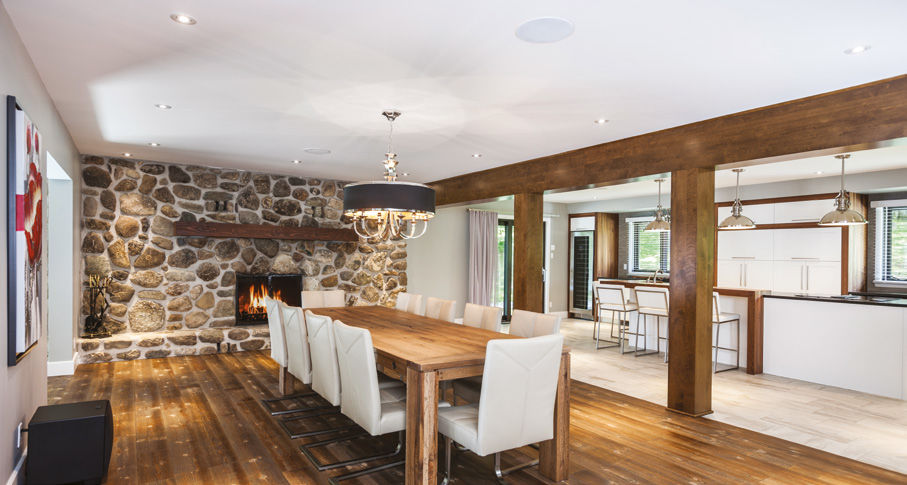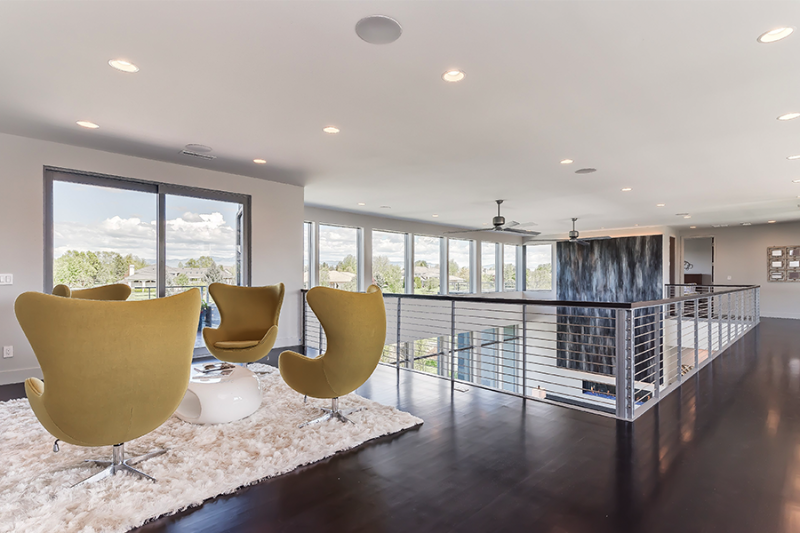Did you know that the best performing audio retailers generate as much as 40% of their revenue from in-wall speakers and related product sales?
In order to maximize your brick-and-mortar or online store’s revenue, you should consider offering all the major product categories to your customers: home audio products, portable audio products, home theater gear and in-wall / in-ceiling speakers. By offering all four of these product categories, your potential customer base will be much larger than if you focused on just one or two of these categories.
If you are not currently selling in-wall / in-ceiling speakers in your store, or not selling enough units in this category, you could be missing out on a significant revenue stream. Customers interested in in-wall / in-ceiling products usually own larger homes and are willing to invest a considerable amount of their disposable income toward a whole home audio system. Another benefit is that consumers that buy these products often ask for professional installation and this gives you a chance to start or expand your custom installation business.
In-wall / in-ceiling speakers, along with many other audio and video categories, have seen a significant increase in demand during the last 1.5 years, mainly attributed to the fact that consumers have been stuck at home due to the pandemic. Thus, they’ve had more money and time to spend when it comes to improving their homes. However, the opportunity to increase your revenue through in-wall speakers and whole-home audio products does not end with the pandemic. Instead, this trend is expected to continue far beyond the pandemic.
Now that it’s clear how your audio retail business can benefit from selling more in-wall / in-ceiling audio products, the question is, how exactly do you increase your revenue in this category? Below we share several tips that are guaranteed to improve your in-wall product sales.
Tips On How To Promote and Sell In-Wall / In-Ceiling Speakers

1) Expand your advertising to include in-wall / in-ceiling audio products in ALL of your ad campaigns
As a business owner, you are likely already advertising your store and the brands that you carry through one or more advertising avenues, such as audio websites, Google Ads, social media, radio, or perhaps you’re still running print ads. It’s always a good idea to advertise in two or more places to reach a larger customer base. Regardless of where you are advertising, we suggest expanding ALL of your ad campaigns to include advertising focused on in-wall and in-ceiling audio products.
Our experience shows that Google Ads are the most effective way to increase traffic to your website and grow your sales revenue. Specifically we recommend running a “Google Ads Search Campaign”. This type of campaign consists of text-based ads that are displayed at the top of the results when people look things up on Google. This means that if someone searches Google for something like “in-wall speakers New York”, your store ad will be shown prominently in the search results. When creating a Google Ads Search Campaign, be sure to create two separate campaigns: one for regular audio products and one for in-wall / in-ceiling / whole home audio products. Each campaign should have the same number of ads - we suggest starting with 4-6 ads in each campaign. This way, you’ll be able to track the results of these two campaigns separately. How can you get started with a Google Ads Search Campaign? Google has a great YouTube tutorial on this [be sure to watch the whole playlist to the right of the video too].
In the case of a digital ad on an audio website, you can ask the publisher if they accept animated GIFs - this way you could have two slides in your ad, one devoted to standard home audio products and one deviate to whole home audio. Alternatively you could provide the publisher with a new ad every 2-3 months and alternate the focus of your ad between these two product categories. With a radio ad, you could simply re-write the script so that half of it is focused on regular audio products and the other half is focused on whole home audio.
Customers who repeatedly see in-wall / in-ceiling speakers in all your ads will likely associate your business as a place to go to when they are ready to purchase the product.
2) Show store visitors that you are an authority in the in-wall / in-ceiling product space
The point of advertising is to drive customers to your online or physical store. Once customers arrive at your store, you need to show them that you are a serious player in in-wall / in-ceiling product space by prominently highlighting these products.
Regardless of whether you run an online or brick-and-mortar store, the first action you should take is to redesign the homepage of your website. We recommend devoting half of the “real estate” of your homepage to in-wall / in-ceiling products. If you have a single image on the homepage, simply split it in half - devote one part to regular audio products, and the other part to in-wall / in-ceiling products. If you have an image slider on your homepage, devote every second slide to in-wall / in-ceiling products.
Next, make sure to set up strong in-wall / in-ceiling speaker product pages. This will further entice customers after they clicked on your homepage. To make an effective product page, it should explain the benefits of in-wall / in-ceiling speakers. Other best practices include a descriptive product name, price, clear product options, product availability, concise and informative description. Also, don’t forget to use high-quality images that are identifiable and zoomable.
If you operate a physical store in addition to your website, you’ll need to take an additional step. Many audio retailers make the mistake of tucking the in-wall / in-ceiling speaker display at the back of their store. Instead, set up a prominent display near the front of your store. This will highlight these products to your customer and position you as an authority in this space, as soon as customers enter your store.

3) Always use high-quality images with PEOPLE in your advertising
Nearly two-thirds of people are visual learners. Consumers are more likely to consider images and ads that emphasize photography over text. More than that, consumers are also 3-4 times more inclined to buy a product if they see an image of people in it. This is mainly because lifestyle images allow consumers to visualize themselves using and enjoying a product. They display a powerful message to consumers and evoke trust, which is challenging, especially in e-commerce culture. Lifestyle product photography is an excellent concept that gives customers a visual of the product and the lifestyle and aesthetic of your brand.
4) Promote complete packages instead of individual products
While audiophiles are well versed about audio products and understand how to interpret technical details, most music lovers are the complete opposite. Music lovers usually do some online research but rely pretty heavily on the expertise and advice of audio retailers. Most consumers shopping for a whole home audio system desire a system that sounds good, is out-of-sight, and easy to use but they don’t care to learn all the technical details. In fact, most consumers find it very challenging to select and match components. In the case of a whole home audio system, it is also difficult for consumers to figure out the price of a full system.
That’s why instead of selling individual in-wall / in-ceiling speaker products, we recommend that you assemble several “complete packages'' instead. For example, consider assembling the following packages:
- Single room audio package: 2 in-ceiling speakers, a streaming device and a 2-channel amp.
- Kitchen / dining room package: 4-6 in-ceiling speakers, a streaming device and a multi-channel amp.
- Living room / basement home theater package: 5-7 in-wall / in-ceiling speakers, subwoofer and an AV receiver
This is an opportunity to show the customers your expertise and present the total price for the system. Remember that most customers interested in in-wall / in-ceiling speakers don’t care about technical details, so when advertising these complete packages you should instead focus on highlighting the quality of sound, visual gains and ease of use. Be sure to also let your customers know that you can install these products for them.
In conclusion
In-wall, in-ceiling and whole home audio can make up a significant portion of your sales revenue. Offering custom installation service can further help to grow your business. However in order to be successful in this space, you have to build a reputation by actively promoting your knowledge and products in these categories. The tips in the article will go a long way to getting you started on the right path!
Did you find this article helpful? If so, please check out more similar content on our website.

